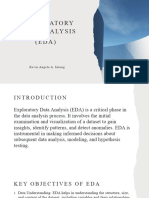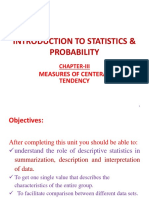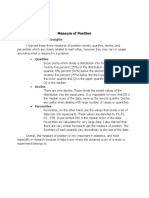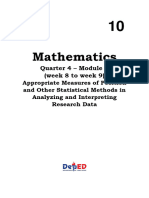0% found this document useful (0 votes)
15 views12 pagesCH4 Exploratory Data Analysis
Exploratory Data Analysis (EDA) is essential for understanding data through statistical and visual methods, helping to uncover patterns and inform further analysis. Key components include descriptive statistics, data visualization, handling missing data, feature engineering, and dimensionality reduction. The process is iterative, allowing for continuous refinement and enhancement of insights and results.
Uploaded by
Ivy EncarnacionCopyright
© © All Rights Reserved
We take content rights seriously. If you suspect this is your content, claim it here.
Available Formats
Download as PPTX, PDF, TXT or read online on Scribd
0% found this document useful (0 votes)
15 views12 pagesCH4 Exploratory Data Analysis
Exploratory Data Analysis (EDA) is essential for understanding data through statistical and visual methods, helping to uncover patterns and inform further analysis. Key components include descriptive statistics, data visualization, handling missing data, feature engineering, and dimensionality reduction. The process is iterative, allowing for continuous refinement and enhancement of insights and results.
Uploaded by
Ivy EncarnacionCopyright
© © All Rights Reserved
We take content rights seriously. If you suspect this is your content, claim it here.
Available Formats
Download as PPTX, PDF, TXT or read online on Scribd
/ 12





















































































